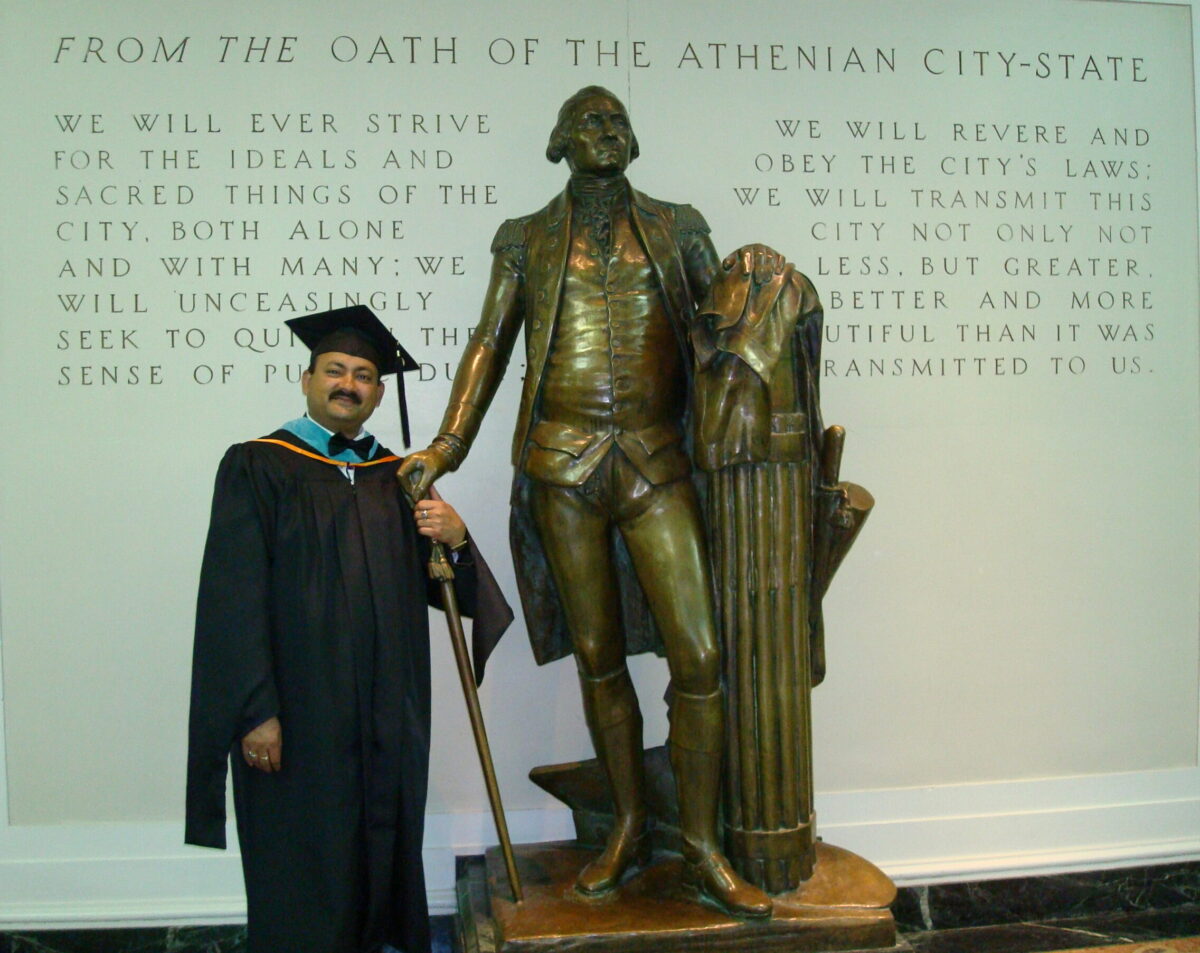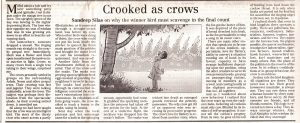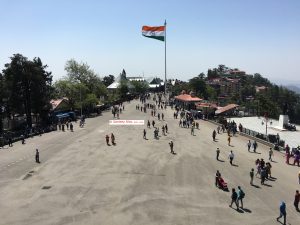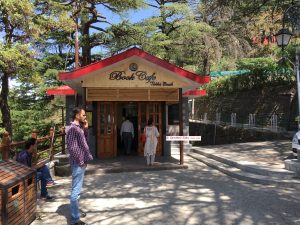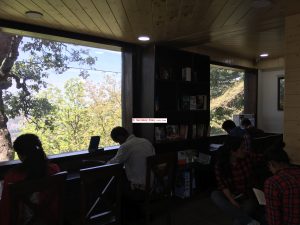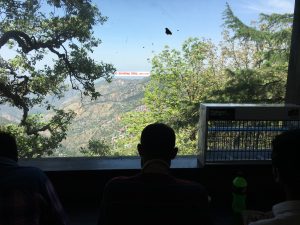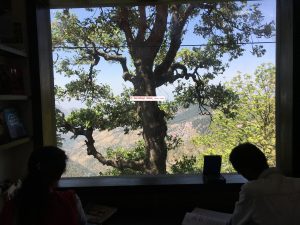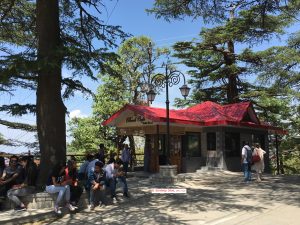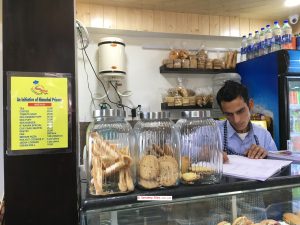(The Pioneer Jan 12, 2002)
Author: admin
Usta Kaam…gold finger on camel back ! by Sandeep Silas
Bikaner, had been successful in evoking may images in the past in my mind; the temple where rats run like devotees, the grandeur of the Junagadh Fort Palace; Lalgarh palace splendor; Gajner palace and the serenity of its lake; the sharp shooter Karni Singh, erstwhile royal of Bikaner, and a somewhat blurred image of gold work on camel leather.
I enquired and set off to search for this Usta Kaam, name I learned later, and stopped by at some small dusty, clumsy shops, where creativity was at its best in humble surroundings. The flawlessness of the work stood out in sharp contrast to the scratches on multi-purpose work cum display tables.
Behind the counter stood a thin young man carrying the burden of legacy despite its odds. He was born in the community of Usta’s, who were originally from Multan, now in Pakistan, and had migrated to Mughal Court. The then Raja of Bikaner, Rai Singh invited them to Bikaner to work on the Junagadh Fort and Anup Mahal walls and ceilings. Naqqashi, is also known as gesso painting and what the craftsmen did to the Raja’s Fort and Palace is nothing short of being miraculous. Delicate floral and animal forms in resplendent gold have left the palace still looking like a decorated bride about to be wed.
Later on, the Usta’s shifted their work to be executed on camel leather as in declining kingdoms and later Independent India there were no royal courts to patronize their work and provide sustenance. The process though appearing simple is very painstaking. First the camel hide is softened and stretched and then placed on clay moulds. To remind you of the strength of camel hide, it was used to make saddles for horseback warriors and shields in war! The mould is removed after drying it for two days in the sun. Then the craftsman draws lines of the design he is going to make on the piece. The items can be in different shapes, like wine flasks, with long or short stem as the case might be; goblets; vases; perfume containers; water-bottles; jewellery boxes, lamp shades, picture-frames; wall hangings; and mirror-frames!
Akbara, is the technique of the design process, wherein a paste of powdered bricks, animal fat, jaggery and fenugreek seeds is embossed on the surface. The coloured portions are first painted and then outlined with fine black lines. Then the glamorous green and red colours are applied on the item and finally a coat of chandras, local varnish seals the fate of the beauty!
Kamladevi Chattopadhyay elaborates the process thus, “The portion to be ornamented is raised by repeatedly applying a special preparation of shell powder, mixed with glue and a kind of wood apple. Alternatively, sand from a ground earthen pot is mixed with glue and jaggery to create the required paste. The embossed surface is then painted upon. Usually a colour called paveri is applied first. Then a colour made from sindur and rogan is applied. Rogan is prepared by mixing chandras and linseed oil. Bat is applied to area where gold is to be patched.
Mohammad Haneef Usta distinguishes between different kinds of Naqqashi:
- Golden lacquered Naqqashi, in which flowers and leaves are golden
- Golden lacquered Naqqashi with mina, in which colour is applied to flowers and leaves
- Golden lacquered Zangali, in which the work surface is emerald green and rest in different colours
- Golden lacquered Tantla, in which surface is golden while flowers and leaves are in colour, and details are in white
- Ranga Baijee in which the work surface remains white, flowers and leaves are painted in transparent colour and partly shaded
He further clarifies on motifs:
- Turanj, in which identical patterns are transcribed at the base and the top
- Chande, in which a small and intricate design is repeated all over the decorated area
- Bharat, in which the entire surface is filled with motifs and patterns leaving little visible “
The most popular patterns are called Tarabandi; star-studded sky and, Naqqashi; floral and animal patterns!
Before the families practicing and nourishing this art are forced to abandon it for want of poor network and appreciation in international markets, the society or a start-up should think of ingenious ways to reach this rare art to markets and museums of the world! It is a gift of God!
Unable to curb my urge to possess one such piece I requested Javed, an artisan to make me a wall hanging with the profile of a famous Rajasthani princess in the centre portion…like she is sitting in a chhatri and waiting for her lover with longing in her mystic eyes!
Note: All photographs have been shot in the natural environment of an artist’s workshop !
The #Oriental White-eye by Sandeep Silas
I photographed the #Oriental #White-eye in my garden today. It hardly settles down for a fraction of a second. Here, in some photographs the bird can be seen drinking droplets of water from jasmine leaves. Sharing the beauty !
“The Oriental white-eye (Zosterops palpebrosus), is a species of white-eye in the Zosteropidae family. It is a resident breeder in open woodland in tropical Asia, east from the Indian subcontinent to Southeast Asia, extending to Indonesia and Malaysia. They forage in small groups, feeding on nectar and small insects. They are easily identified by the distinctive white eye-ring and overall yellowish upper-parts. Several populations of this widespread species are named subspecies and some have distinctive variations in the extent and shades of yellows in their plumage.This bird is small (about 8–9 cm long) with yellowish olive upper parts, a white eye ring, yellow throat and vent. The belly is whitish grey but may have yellow in some subspecies”. (http://animals.wikia.com/wiki/Oriental_White-eye)
To be with Nature is to be in Nature!
May 18th 2017
I Found You… by Sandeep Silas
Crooked as Crows by Sandeep Silas
Book Cafe, run by prisoners, at Shimla, India- a reform step; article by Sandeep Silas
In a country of 1.311 billion, 1401 prisons with 4,19,623 prisoners, divided into convicts and under-trials, only one officer has had the courage and sensitivity to recognize that prisoners too are fellow human beings.
True, some Court has sat in Judgment upon them for committing some crime or the other, but do we ever come to know of their real life stories, the actual circumstance, which compelled their impulse to do an act, which was adjudged as crime under a code of law. True, crime needs punishment and the latter is necessary to maintain a discipline in a civil society, but reform is also a possibility.
This opportunity has been realized by a distinguished Police officer posted in Shimla, (Himachal Pradesh) as Director-General (Prisons), Mr. Somesh Goyal, who incidentally is also a dear friend and a batchmate.
One officer Pankaj Raj conceived the idea of a Book Café, and Somesh Goyal executed it to be located at Takka Bench, just above the famous Ridge of Shimla, which is being run by prisoners, all serving a life sentence. Here, they serve pizzas, burgers, biscuits, tea, coffee and the usual stuff inside a Café, which has wall cabinets all around stuffed with books.
Montaigne says, “Ordinate conduct, moderation, constancy apart, I believe that anything at all can be done, even by a man who, taken overall, is lacking and deficient. That is why the wise men say that to judge a man properly we must principally look at his routine activities and surprise him in his everyday dress”.[1]
The atmosphere created is of a library café, where one can sit head down immersed deep in the world being unveiled by the book and occasionally look up through the windows far into valleys and beyond, into the realms of the mind…
The Book Café was inaugurated this April 11th by the Hon’ble Chief Minister of Himachal Pradesh, who also must be given credit for approving such a pioneering venture as a first in any State of India. The Café seats 40, and has free Wi-Fi. I liked the indoor décor of deodar wood, which gives a warm feeling in a hill city. A lot of books, available to a reader, narrate the history of the evolution of Shimla, which became the capital of the British Raj, with evocative photo prints. Apart from that you have historical philosophies, detective thrillers and travel & tourism books.
I saw many young couples and the recently married ones come to the café and for want of space inside sit in conversation upon the seating area around the majestic tree outside. Having completed my walk of 7.5 km for the day, I thought I could afford a pizza and had one. The courtesy with which I was served is worth mentioning.
Look into the faces and eyes of Yograj and Jai Chand and you will wonder why life made them captives of a criminal impulse and why their life is not like other men. Just for a second of indiscretion they got punished with a life sentence, live in jail as condemned persons, devoid of fresh air, freedom to go anywhere or to eat their heart’s desire. I don’t know the facilities inside the jails in Himachal, but from what I have seen they will be definitely sub-human. I do not have those X-ray eyes, which spiritual Masters possess, blessed with the ability to look deep into your soul, but, definitely I have a feeling heart and a thinking mind. So I don’t know for sure what thoughts a prisoner of fate like Yograj has as he serves the public here, but I saw he was thoughtful.
“I disclaim those incidental reformations based on pain. ‘God must touch our hearts’. I Samuel 10:26. Our conscience must emend itself by itself, by the strengthening of our reason not by the enfeebling of our appetites. [2]
I think that if other States of India could adopt this reformatory idea as ‘sharing of best practices’ a window of reform shall open quietly, inside hearts and our society.
Prison Statistics, India
|
Courtesy: World Prison Brief; http://www.prisonstudies.org/country/india
[1] Michel De Montaigne; The Complete Essays; On virtue; page 799; Penguin.
[2] Michel De Montaigne; The Complete Essays; On repenting; page 920; Penguin.
Khushboo by Sandeep Silas ‘deep’ in Saada Khayal
(Khushboo by Sandeep Silas ‘deep in Saada Khayal; Vani Prakashan 2009)
FRAGRANCE
Once again a gust of wind brings your fragrance to me
The same world of your poise, the same happy-go-lucky attitude
Your scattered tresses, your melting down in my presence
Before me, the blossoming of your body, like a bud
Shining stars visible in those wistful eyes
Nobody ever saw, such scenes of heady intoxication
Where do I hide the sparks, those fill my pores
My madness is visible in all directions
Let somebody, touch and feel me like a butterfly
He too shall fall like a drunkard inebriated with your odour
Time kept on shrinking, become drops of feelings
Neither I came to know, nor saw, sat I with closed eyes
Now, every breath brings to me your aroma
Let all my life pass in the shadow of this moment
The halting of hesitant conversations on my lips
The winds changing suddenly with the season
I could not understand you my beloved, though I knew you
But, the scent of your body I inhale with every gust of the air
(Translated by Sandeep Silas)
The #Shaping of a #Thought by #Sandeep #Silas
I #Come to #You by #Sandeep #Silas
Review of #Sandeep #Silas’ poetry book published by #Sahitya #Akademi
Found in my archives a #Review of my poetry book in #Indian #Literature published by #Sahitya #Akademi
Review: Borough in the Mist by Sandeep Silas
Reviewed Work: Borough in the Mist by Sandeep Silas
Review by: J. Bhagyalakshmi
Indian Literature
Vol. 51, No. 4 (240) (July-August 2007), pp. 211-213
Published by: Sahitya Akademi
Stable URL: http://www.jstor.org/stable/23346142
Page Count: 3
